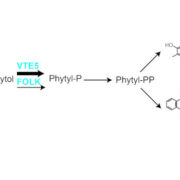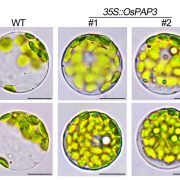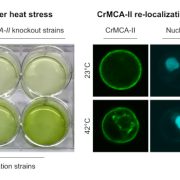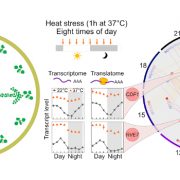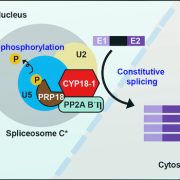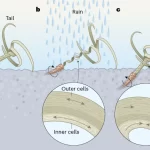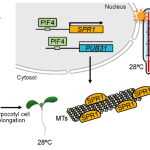Mechanism behind ripened green bananas under high temperature
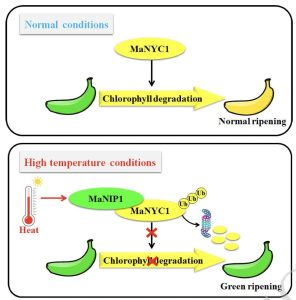 Heat stress is a common consequence of global warming for terrestrial plants, and it can have devastating effects on growth and yield. In terms of fruit ripening, high temperature is one of the most significant abiotic stresses inhibiting quality formation. During fruit ripening, chlorophyll breaks down in a normal process called “degreening,” which determines fruit quality and how nice the fruit looks. In most cases, high temperature stimulates degradation of chlorophyll. However, in the case of banana, which is the most popularly consumed fresh fruit worldwide, it can delay or completely abolish degreening. In this article, Luo and colleagues have deciphered the molecular mechanism behind the suppression of degreening at high temperatures in bananas. They identified a chlorophyll catabolic enzyme MaNYC1 (NON-YELLOW COLORING 1) that exhibited a reduced protein level when banana fruit were green ripening at high temperature. MaNYC1 is a well characterized NADPH-dependent chlorophyll b reductase in Arabidopsis. The authors found that NYC1 is rapidly degraded under high temperature and this degradation is facilitated by NYC1 interacting protein (NIP1) which essentially interacts with NYC1 and mediates its degradation via a proteasomal degradation pathway. Hence, this study provides an insight into a regulatory NYC1-NIP1 module in green ripening of bananas underlying fruit quality deterioration under high temperature stress. (Summary by Arpita Yadav @arpita_yadav_) 10.1093/plphys/kiad096
Heat stress is a common consequence of global warming for terrestrial plants, and it can have devastating effects on growth and yield. In terms of fruit ripening, high temperature is one of the most significant abiotic stresses inhibiting quality formation. During fruit ripening, chlorophyll breaks down in a normal process called “degreening,” which determines fruit quality and how nice the fruit looks. In most cases, high temperature stimulates degradation of chlorophyll. However, in the case of banana, which is the most popularly consumed fresh fruit worldwide, it can delay or completely abolish degreening. In this article, Luo and colleagues have deciphered the molecular mechanism behind the suppression of degreening at high temperatures in bananas. They identified a chlorophyll catabolic enzyme MaNYC1 (NON-YELLOW COLORING 1) that exhibited a reduced protein level when banana fruit were green ripening at high temperature. MaNYC1 is a well characterized NADPH-dependent chlorophyll b reductase in Arabidopsis. The authors found that NYC1 is rapidly degraded under high temperature and this degradation is facilitated by NYC1 interacting protein (NIP1) which essentially interacts with NYC1 and mediates its degradation via a proteasomal degradation pathway. Hence, this study provides an insight into a regulatory NYC1-NIP1 module in green ripening of bananas underlying fruit quality deterioration under high temperature stress. (Summary by Arpita Yadav @arpita_yadav_) 10.1093/plphys/kiad096


